- Home
- Tom Clancy
Conviction (2009) Page 9
Conviction (2009) Read online
Page 9
After much discussion and even an inspection of the parted rope by one of the guards standing on the shoulders of another, the group seemed satisfied that nothing was amiss. They retraced their steps back to the Cushmans, and a quick radio call from the leader brought the laser grid back online. The guards mounted up and drove away, the soft hum of the Cushmans’ engines fading into the darkness. Fisher let himself take a deep breath and let it out.
TEN minutes passed before the spotlights went dark and the decorative lighting returned. All was again well at Schloss Ernsdorff. The guards probably didn’t feel that way, of course, having been dispatched on five wind-related goose chases, but unless one of them gave Fisher no other choice, at least they would live through the night.
Fisher picked his way northwest, out of the Old West town, through the pirate cove/Barbary Coast shantytown, and around the far end of the obstacle course, until he was within sight of the wall bordering the front of the property. Here the landscaping was more natural, the shrubs and undergrowth having been left unattended on purpose, Fisher suspected, to create the wall of vegetation he’d photographed during his lakefront surveillance. At last he reached the gravel driveway. Across this and through another three hundred yards of trees, he’d inscribed a wide arc around the home’s front door, a U-shaped portico turnaround flanked by river-rock columns.
Forty minutes after leaving the Old West town, Fisher crept up to the northern wall and followed it alongside the house, paralleling a lighted walkway to the servants’ quarters. Fisher was playing a hunch. As his visit here was so brief, it seemed unlikely Ernsdorff would bring along a contingent of servants. Ahead, at the end of the path, he could see the quarters, a cluster of three whitewashed Caribbean-style bungalows enclosed by a six-foot cedar stockade fence.
Fisher crept up to the fence and knelt down. He withdrew the flexicam and wriggled it between the fence’s slats. On the OPSAT screen, the flexicam’s fish-eye lens showed the outer wall of the nearest bungalow. He panned up, left, and right, looking for lights or movement in the windows, but saw nothing. He withdrew the flexicam and tucked it away. After a quick NV/IR/EM scan, he was over the fence and on the other side.
He made a quick circuit of all three bungalows to confirm that they were unoccupied, then returned to where he started. He checked the side door for alarms and found none, so he picked the lock and slipped inside. Off the kitchen he found what he’d come for: a sliding-glass door leading to an arched, glassed-in breezeway. The terra-cotta tiles, rattan furniture, and potted palms told Fisher this was Ernsdorff’s version of a solarium. Keeping to the shadows, and careful to avoid patches of moonlight slicing through the glass ceiling, Fisher crossed the breezeway to the opposite door, this one made of thick oak and equipped with an industrial-grade Medeco dead bolt but no alarm sensors. It took him two minutes’ work to open the Medeco. When the lock snapped open, he put away his tools, drew his SC pistol, crab-walked backward, and crouched beside a potted palm. He waited. If he was wrong about the sensors, or someone had heard the click of the lock, he’d know shortly.
He gave it five minutes. Nothing moved.
He holstered the SC and returned to the door. The gap beneath it was an eighth of an inch—too narrow for the flexicam—so he gently turned the knob, paused for thirty seconds, then eased the door open a half inch, and slipped the flexicam through the gap. The fish-eye lens revealed a short hallway bordered on both sides by pantries and a kitchen done entirely in stainless steel and black granite. It suited what Fisher imagined was Yannick Ernsdorff’s Teutonic personality: cold and utilitarian.
Fisher eased open the door, stepped through, and eased the door shut. Somewhere in the kitchen he heard the click of footsteps on tile. He ducked into the pantry. He drew his sap and went still. The light in the kitchen came on, casting stripes down the short hall before him. A drawer opened; silverware rattled; the refrigerator door opened and shut. The soft pop of a Tupperware lid being removed. The lights went out. Fisher peeked around the corner, then padded through the kitchen, around the center island, and up to the still swinging door through which the snacker had entered. Fisher caught the door with his fingertips and pushed it open until he could see a figure in a black Windbreaker retreating down the wide, dimly lit hallway. Fisher recognized the Windbreaker: one of the guards. Like the kitchen, the hallway’s decor matched Ernsdorff: blond hardwood floors covered in a carpet runner with a jagged red, white, and black pattern. The guard turned left at the end of the hallway and disappeared.
Fisher retreated to the pantry, took the OPSAT off standby, and scrolled through until he found the blueprints of Ernsdorff’s home. The main floor was devoted to living spaces—kitchen, living room, dining room, family room, and three bathrooms—while the second floor was all bedrooms and guest rooms. The third floor was divided into office space, storage, a library, study, and exercise room. Though it wasn’t listed on the plans, based on where the guard seemed to be heading, the monitoring center was in the basement. He needed to make sure of that before going any farther.
The carpet runner was thick and absorbed the sound of his feet easily. He reached the end of the hall and stopped short, sliding along the wall to the head of the stairs. One set went upward, another down. From below he heard muffled voices, a few chuckles. Fisher descended, pausing every few steps to listen. The stairs turned right at the landing, doubled back on themselves, and ended at a six-by-six-foot foyer. The light from the hallway above had all but faded, casting the foyer in deep shadow. To the left was an archway. Fisher drew his pistol and stepped up to the threshold. To his left a narrow hallway disappeared into darkness; near its end, on the right, he saw a sliver of horizontal light near the floor. A door. He flipped his Tridents into place and selected NV to confirm. There were three other rooms in the hall, one at the far end and two on the right. The lighted room was equipped with a biometric keypad lock; the others, standard knobs.
The door to the monitoring center opened, casting a rectangle of white light on the opposite wall. Fisher’s heart lurched, but he controlled it and drew back smoothly, stepping through the arch and turning left into the corner, where he dropped the SC to his side and stood erect. A figure appeared through the arch and started up the stairs. Fisher lifted the barrel of the SC at his waist and tracked the man up the stairs and around the landing until he disappeared from view. Fisher followed, taking the stairs two at a time on flat feet, pausing only briefly at the top to check the corner. One of the doors in the hallway was closed; having checked it already, Fisher knew it was a bathroom. The toilet flushed. Fisher crossed the hall and stepped into the linen closet. The bathroom door opened. Footsteps padded away. Fisher waited until he heard the soft buzz and click from the biometric pad outside the monitoring center, then stepped out of the closet, walked back across the hall, and started up the stairs.
He paused at the second floor only to count open and closed doors and to confirm that the layout matched his blueprint, then continued to the third floor. A few steps from the top, he froze. He crouched down. Directly across from him lay the library. The double mahogany doors were opened. Inside, silhouetted against the mullioned windows on the far side of the room, was a figure. Fisher smelled cigar smoke, and as if on cue, a dime-sized cherry glowed to life in the dark. Whoever it was in there, he was facing Fisher. Ernsdorff himself, Fisher thought. According to his intel, Ernsdorff was traveling alone, having left his wife and two young daughters behind in Vienna.
The cherry came to life again, this time moving, turning back toward the windows. Fisher switched the Tridents first to infrared, then to EM, and saw nothing unusual, so he stood up and walked across the carpeted hall to a seating alcove beside the library doors. He crouched against the wall nearest the doors, then withdrew the flexicam, let it peek around the corner, and waited.
Ernsdorff was in no hurry. Fisher could hear him pacing in the library, not with the insistent stride of a worried man, but more contemplative, as though he hadn’t a
concern in the world. And he didn’t—at least not from Fisher, at least not on this night. Of all the players he would likely visit before this job was over, Ernsdorff was the one whose disappearance or death would cause the most harm. If Ernsdorff went down, the others would go to ground. Then again, Fisher thought, if Ernsdorff was intent on spending the rest of the night smoking and pacing in the library, he might have to force the matter.
It didn’t come to that. Ten minutes later Ernsdorff emerged from the library. He was wearing a red silk robe and black silk pajama bottoms. Without a backward glance, he trotted down the stairs to the second floor. Fisher put away the flexicam and ducked into the library.
He switched to night vision. The space was enormous, with a domed ceiling and built-in shelves so tall they warranted a rolling ladder. There must have been thirty thousand books, Fisher estimated. The carpet was dark, perhaps olive, and the desk and side chairs were heavy teak. Fisher switched to EM and turned in a slow circle. Aside from the pulses and swirls of hidden electrical cables, television cables, and phone lines, the room was electromagnetically quiet. If Ernsdorff’s server was here, it was well shielded. Once certain he hadn’t missed any nooks or crannies or hidden alcoves, Fisher switched back to night vision and headed for the door.
He stopped.
A flashlight beam was coming up the stairs.
Fisher retreated. He trotted across the carpet to the desk and crouched down. The flashlight beam grew wider, cutting a pie slice into the library. The guard stepped up to the threshold and panned the light around for ten seconds, then moved on. Routine patrol. Fisher checked his watch: 1:00 A.M. on the dot. Hourly patrols, starting on the top floor and moving downward. Standard stuff. The rest of the guard’s circuit took a mere five minutes; the second floor, which was all bedrooms, would take even less. The man would be back with his buddies in the monitoring center in twenty minutes.
Fisher waited until the man was headed back down the stairs, then stepped out, moved to the railing, and peeked over. Interesting. The guard had bypassed the bedroom floor altogether.
Fisher moved on to the next room—a study furnished almost identically to the library save for the domed ceiling and bookshelves. A quick scan with the EM showed nothing of interest.
Next room. Ernsdorff’s office. Unlike the previous two, the office decor was contemporary: quasi-industrial-style shelving and furniture, an all-glass crescent-shaped desk, and area rugs in red and black. Fisher did his EM sweep. Strike three. What had he missed? Given the size of the house, and without knowing the exact location of the server, Fisher had been forced to make an assumption, namely that since the server was business related it would be stored in a business-related area. Now Fisher rethought this. Ernsdorff kept his servants’ quarters separate from the main house; he kept his security personnel in the basement; he probably forbade the guards to patrol the bedroom floor. Would he treat the computer nerd of Data Guardians any differently? Fisher doubted it. The next likely location for the server seemed to be the basement, near the monitoring center. He should have scanned the hallway for EM signals. Live and learn.
Fisher returned to the head of the stairs and waited at the railing—crouched down with the flexicam curled over the edge and doing the watching for him—until the roving guard reappeared in the first-floor hallway and headed back down to the basement. Fisher followed, moving quickly, more confident in the layout and the guards’ movements. He stepped through the arch outside the monitoring center and switched the Tridents to EM.
Fisher smiled. There you are.
The door at the end of the hall swirled with various shades of blue electromagnetic waves. Fisher checked his watch: thirty-five minutes before the next roving patrol. Stepping carefully now, he moved past the monitoring center and knelt down before the server room. He tried the knob; unsurprisingly, it was locked. Yet another Medeco industrial-grade dead bolt—one for which only Ernsdorff had the key, Fisher suspected. This lock took four minutes; while no more complex than the one he’d encountered in the breezeway, this one happened to be within a few feet of a room full of security guards. Here silence, not speed, was his primary concern.
The lock snicked open. Fisher switched to night vision, gently swung the door inward, then crab-walked as he closed the door behind him. The home’s utility room was the size of a small bedroom and divided by a half wall, one portion devoted to the water heater, furnace, and air-conditioning unit, the other portion to telephone lines, coaxial and Ethernet cables, modems, and routers—and sitting alone on a shelf on the wall like a pizza box: Ernsdorff’s IBM System x3350 server.
Now came the easy part. Having been preloaded with the requisite software, the OPSAT simply needed a digital handshake with the server. To accomplish this, Fisher fitted the OPSAT with its Ethernet adaptor, then plugged the cable into the server’s empty dual gigabit port. The OPSAT went to work, its screen flowing with the numbers and characters that were the language of digital computing. Little of it was recognizable to Fisher, but the script was quick enough. Two minutes after he initiated the handshake, the OPSAT’s screen announced:process complete . . . establishing uplink . . . uplink established . . . uploading . . . upload complete.
Fisher unplugged the cable.
HE retraced his steps—back down the main hall, through the kitchen and the breezeway to the servants’ quarters, then back over the fence and along the wall to the property’s western edge—the lakefront side. Here he repeated his windblown branch routine, vaulting the wall and leaving the branch teetering in place before sprinting down the drainage ditch running along the wall. By the time the Cushmans arrived, he would be a quarter mile away. Ahead lay an intersection: One road curved northwest along the shore, a second headed roughly west in the direction of the bridge near Fisher’s campsite, and a third swung south and east, meandering its way back toward Vianden. The wind was still gusting, whipping branches and causing the canopies to sway against the night sky, but the rain had slackened to a drizzle.
As he approached the bend, a pair of headlights appeared over the grassy berm. The car was moving so fast Fisher barely had time to dive headfirst into the weeds at the bottom of the ditch. Then the car was gone, its engine fading.
Tires screeched. He heard the clunk of a transmission being shifted, then the unmistakable whir of an engine in reverse. Fisher didn’t bother looking, he simply got up and ran.
11
HE didn’t have time to think, to entertain the only question that popped into his head: How did they find me? He only had time to react. His mind switched over to evasion-and-escape mode.
He sprinted down the ditch, around the bend, then up the slope, across the road into the opposite ditch, and then through a hedgerow bordering a farmer’s field. Now on even ground—the field had not yet been tilled—he picked up speed, running southeast in the general direction of Vianden; the road back to town was to his right, a hundred yards away.
He covered the quarter-mile field in just over a minute. He was almost to the far tree line. Come on, come on . . . If it was Hansen and his team, they would be in two cars. Do your job. . . . He glanced over his shoulder and saw a dark sedan turning onto the Vianden road. A figure was leaning out the driver’s-side rear window, panning a handheld spotlight over the ditch and the field beyond. Fisher slowed his pace ever so slightly, and as he closed to within twenty feet of the tree line, the spotlight pinned him. A moment later he was in the trees. He ran for another twenty feet and stopped to catch his breath. He checked the OPSAT, pulled up the area map. This stand of trees was merely a border between two fields. If the sedan kept going, after another five hundred feet the road would curve again, coming within twenty feet of the next field over. If the team was going to try to flush him, that was where they would start. He had a hunch about the other car, but only time would tell if he was correct.
He took off running again, heading due east. The trees gave way to a strip of open ground, then another hedgerow; Fisher pushed through
this and into the next field and kept running. To his left, across two more fields, Fisher could see a pair of headlights heading east down the bridge road. Though he couldn’t make out the model, it was similar to the first car. Hansen was learning. Rather than going “all in” and sending all his troops on a foot chase, he’d split his forces and hedged his bets in case Fisher decided to double back—which was exactly what he’d done. With team members probably in the trees behind him and the second sedan on the bridge road to act as a blocking force, they had him in a nicely designed pincer movement. Unfortunately, nicely designed wasn’t going to be good enough. He hoped.
He kept running due east. The car on the bridge road had spotted him but hadn’t stopped, acting instead as forward observer for the flushing team. The next hedgerow came into view. The field beyond was rectangular and separated from the road by a narrow wedge of trees. When Fisher was fifty feet from the hedgerow, the sedan disappeared behind the trees. He veered left and put everything he had into a full sprint, covering the distance to the road in thirty seconds. He slid headfirst into the ditch, crawled up the other side, and stopped a few feet short of the shoulder. The sedan was still moving east, negotiating a slight incline. As its taillights disappeared over the top, Fisher stood up, ran across the road and into the trees beyond. Another short sprint brought him within sight of the southern wall of Ernsdorff’s property. He turned right--east--and kept going until the trees to his right thinned out slightly. He stopped and dropped flat. A few moments later the sedan came speeding back west. Having reached the eastern edge of the wedge and realized Fisher had not kept to his course; they’d doubled back. They would search the wedge of trees first, then the ditches, and only then would they realize he’d taken to the larger forest—thousands of acres’ worth.

 Changing of the Guard
Changing of the Guard Clear and Present Danger
Clear and Present Danger Hounds of Rome
Hounds of Rome Breaking Point
Breaking Point Tom Clancy's Jack Ryan Books 7-12
Tom Clancy's Jack Ryan Books 7-12 Full Force and Effect
Full Force and Effect The Archimedes Effect
The Archimedes Effect Combat Ops
Combat Ops Into the Storm: On the Ground in Iraq
Into the Storm: On the Ground in Iraq Under Fire
Under Fire Point of Impact
Point of Impact Red Rabbit
Red Rabbit Rainbow Six
Rainbow Six The Hunt for Red October
The Hunt for Red October The Teeth of the Tiger
The Teeth of the Tiger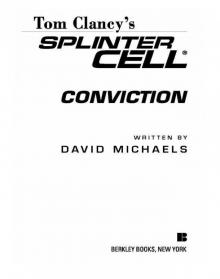 Conviction (2009)
Conviction (2009) Battle Ready
Battle Ready Patriot Games
Patriot Games The Sum of All Fears
The Sum of All Fears Fallout (2007)
Fallout (2007) Red Storm Rising
Red Storm Rising The Cardinal of the Kremlin
The Cardinal of the Kremlin Executive Orders
Executive Orders Lincoln, the unknown
Lincoln, the unknown Threat Vector
Threat Vector The Hunted
The Hunted Shadow Warriors: Inside the Special Forces
Shadow Warriors: Inside the Special Forces End Game
End Game Special Forces: A Guided Tour of U.S. Army Special Forces
Special Forces: A Guided Tour of U.S. Army Special Forces Locked On
Locked On Line of Sight
Line of Sight Tom Clancy Enemy Contact - Mike Maden
Tom Clancy Enemy Contact - Mike Maden Fighter Wing: A Guided Tour of an Air Force Combat Wing
Fighter Wing: A Guided Tour of an Air Force Combat Wing Springboard
Springboard Line of Sight - Mike Maden
Line of Sight - Mike Maden EndWar
EndWar Dead or Alive
Dead or Alive Tom Clancy Support and Defend
Tom Clancy Support and Defend Checkmate
Checkmate Command Authority
Command Authority Carrier: A Guided Tour of an Aircraft Carrier
Carrier: A Guided Tour of an Aircraft Carrier Blacklist Aftermath
Blacklist Aftermath Marine: A Guided Tour of a Marine Expeditionary Unit
Marine: A Guided Tour of a Marine Expeditionary Unit Commander-In-Chief
Commander-In-Chief Armored Cav: A Guided Tour of an Armored Cavalry Regiment
Armored Cav: A Guided Tour of an Armored Cavalry Regiment Tom Clancy's Jack Ryan Books 1-6
Tom Clancy's Jack Ryan Books 1-6 The Ultimate Escape
The Ultimate Escape Airborne: A Guided Tour of an Airborne Task Force
Airborne: A Guided Tour of an Airborne Task Force Debt of Honor
Debt of Honor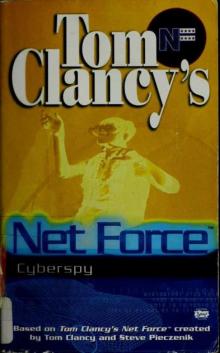 Cyberspy
Cyberspy Point of Contact
Point of Contact Operation Barracuda (2005)
Operation Barracuda (2005) Choke Point
Choke Point Power and Empire
Power and Empire Every Man a Tiger: The Gulf War Air Campaign
Every Man a Tiger: The Gulf War Air Campaign Endgame (1998)
Endgame (1998) EndWar: The Missing
EndWar: The Missing Splinter Cell (2004)
Splinter Cell (2004) The Great Race
The Great Race True Faith and Allegiance
True Faith and Allegiance Deathworld
Deathworld Ghost Recon (2008)
Ghost Recon (2008) Duel Identity
Duel Identity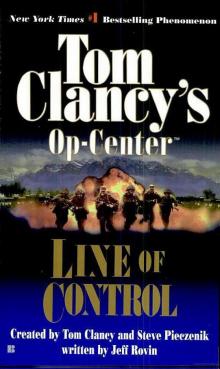 Line of Control o-8
Line of Control o-8 The Hunt for Red October jr-3
The Hunt for Red October jr-3 Hidden Agendas nf-2
Hidden Agendas nf-2 Acts of War oc-4
Acts of War oc-4 Ruthless.Com pp-2
Ruthless.Com pp-2 Night Moves
Night Moves The Hounds of Rome - Mystery of a Fugitive Priest
The Hounds of Rome - Mystery of a Fugitive Priest Into the Storm: On the Ground in Iraq sic-1
Into the Storm: On the Ground in Iraq sic-1 Threat Vector jrj-4
Threat Vector jrj-4 Combat Ops gr-2
Combat Ops gr-2 Virtual Vandals nfe-1
Virtual Vandals nfe-1 Runaways nfe-16
Runaways nfe-16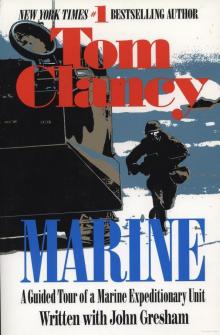 Marine: A Guided Tour of a Marine Expeditionary Unit tcml-4
Marine: A Guided Tour of a Marine Expeditionary Unit tcml-4 Shadow Warriors: Inside the Special Forces sic-3
Shadow Warriors: Inside the Special Forces sic-3 Jack Ryan Books 1-6
Jack Ryan Books 1-6 Cold Case nfe-15
Cold Case nfe-15 Changing of the Guard nf-8
Changing of the Guard nf-8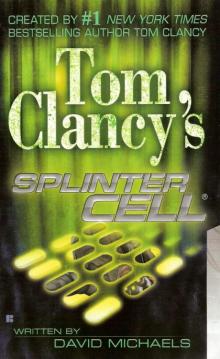 Splinter Cell sc-1
Splinter Cell sc-1 Battle Ready sic-4
Battle Ready sic-4 The Bear and the Dragon jrao-11
The Bear and the Dragon jrao-11 Fighter Wing: A Guided Tour of an Air Force Combat Wing tcml-3
Fighter Wing: A Guided Tour of an Air Force Combat Wing tcml-3 Patriot Games jr-1
Patriot Games jr-1 Jack Ryan Books 7-12
Jack Ryan Books 7-12 Mission of Honor o-9
Mission of Honor o-9 Private Lives nfe-9
Private Lives nfe-9 Operation Barracuda sc-2
Operation Barracuda sc-2 Cold War pp-5
Cold War pp-5 Point of Impact nf-5
Point of Impact nf-5 Red Rabbit jr-9
Red Rabbit jr-9 The Deadliest Game nfe-2
The Deadliest Game nfe-2 Springboard nf-9
Springboard nf-9 Safe House nfe-10
Safe House nfe-10 EndWar e-1
EndWar e-1 Duel Identity nfe-12
Duel Identity nfe-12 Deathworld nfe-13
Deathworld nfe-13 Politika pp-1
Politika pp-1 Rainbow Six jr-9
Rainbow Six jr-9 Tom Clancy's Power Plays 1 - 4
Tom Clancy's Power Plays 1 - 4 Endgame sc-6
Endgame sc-6 Executive Orders jr-7
Executive Orders jr-7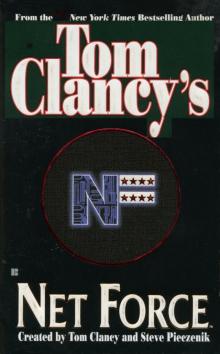 Net Force nf-1
Net Force nf-1 Call to Treason o-11
Call to Treason o-11 Locked On jrj-3
Locked On jrj-3 Against All Enemies
Against All Enemies The Sum of All Fears jr-7
The Sum of All Fears jr-7 Sea of Fire o-10
Sea of Fire o-10 Fallout sc-4
Fallout sc-4 Balance of Power o-5
Balance of Power o-5 Shadow Watch pp-3
Shadow Watch pp-3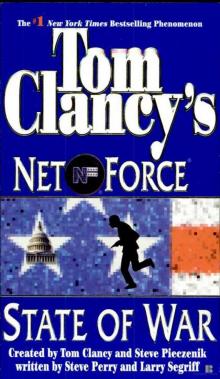 State of War nf-7
State of War nf-7 Wild Card pp-8
Wild Card pp-8 Games of State o-3
Games of State o-3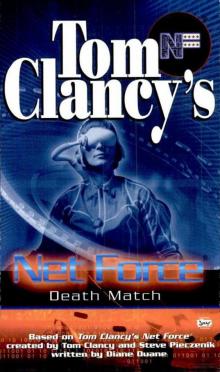 Death Match nfe-18
Death Match nfe-18 Against All Enemies mm-1
Against All Enemies mm-1 Every Man a Tiger: The Gulf War Air Campaign sic-2
Every Man a Tiger: The Gulf War Air Campaign sic-2 Cybernation nf-6
Cybernation nf-6 Support and Defend
Support and Defend Night Moves nf-3
Night Moves nf-3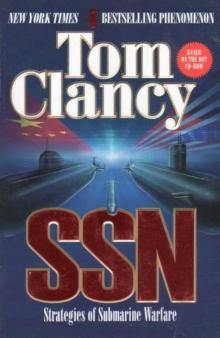 SSN
SSN Cutting Edge pp-6
Cutting Edge pp-6 The Cardinal of the Kremlin jrao-5
The Cardinal of the Kremlin jrao-5 War of Eagles o-12
War of Eagles o-12 Op-Center o-1
Op-Center o-1 Mirror Image o-2
Mirror Image o-2 The Archimedes Effect nf-10
The Archimedes Effect nf-10 Teeth of the Tiger jrj-1
Teeth of the Tiger jrj-1 Bio-Strike pp-4
Bio-Strike pp-4 State of Siege o-6
State of Siege o-6 Debt of Honor jr-6
Debt of Honor jr-6 Zero Hour pp-7
Zero Hour pp-7 Ghost Recon gr-1
Ghost Recon gr-1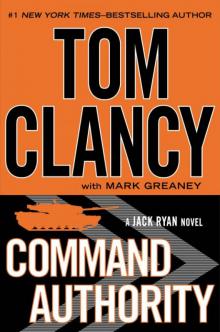 Command Authority jr-10
Command Authority jr-10 Tom Clancy's Power Plays 5 - 8
Tom Clancy's Power Plays 5 - 8 Checkmate sc-3
Checkmate sc-3 Breaking Point nf-4
Breaking Point nf-4 Gameprey nfe-11
Gameprey nfe-11 The Hunted e-2
The Hunted e-2 Hidden Agendas
Hidden Agendas Divide and Conquer o-7
Divide and Conquer o-7